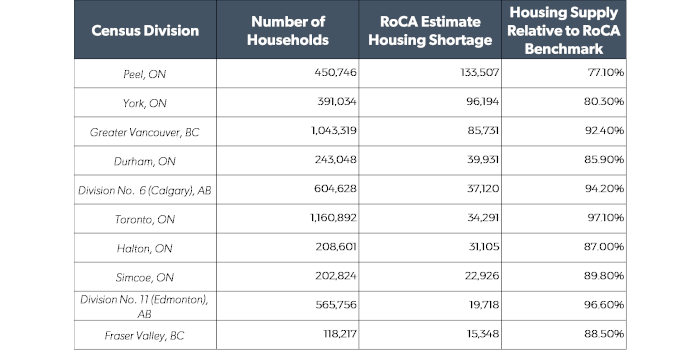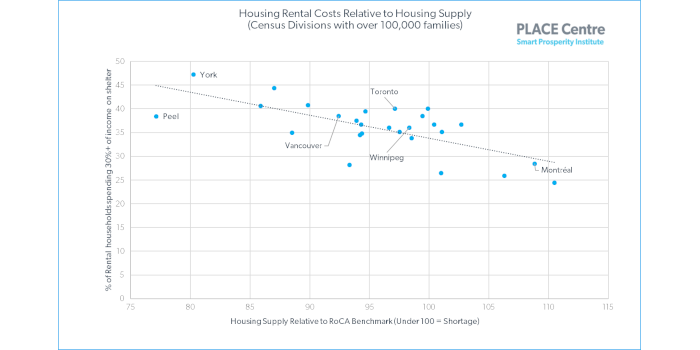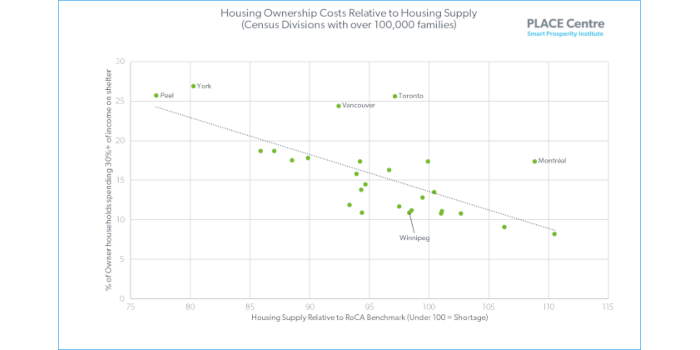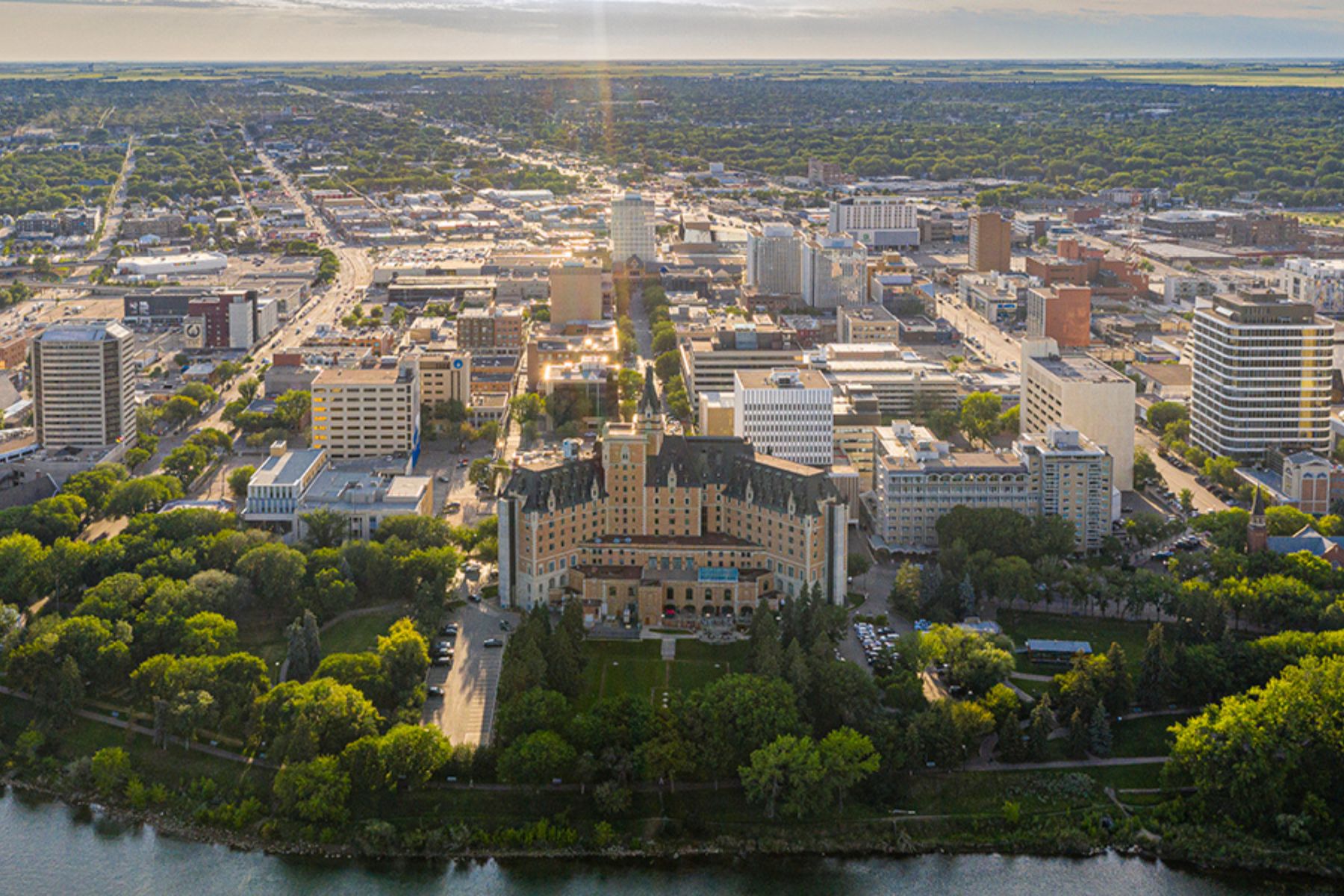Some communities in Canada have high rent costs and housing prices, and those high costs can be linked back to a shortage of housing. In some quarters, this is a relatively controversial statement, and housing supply shortages are seen as a myth. The debate is understandable; there is no universally agreed upon method to quantify the housing shortage a community is facing, or how to even define what a housing shortage is. However, methods do exist to address these questions, and if they work, we should expect to see that the communities that these methods identify as facing the largest housing shortages also have the biggest affordability challenges. As it turns out, our method of estimating the size of housing shortages also identifies the communities with the biggest affordability challenges – as will be explored in today’s post.
The RoCA Benchmark Method
In our paper, Ontario's Need for 1.5 Million More Homes, Alison Dudu, Maryam Hosseini, and I developed a method to estimate a community's housing needs. Specifically, we created a "Rest of Canada Average" (RoCA) benchmark, which is the average housing supply levels in Canada in 2016, outside of the two provinces with chronic housing shortages – Ontario and British Columbia – and adjusted for both population size and age. A community's deviation from this benchmark suggests a housing shortage or surplus.
We believe this method has merit, but we also would be the first to admit that it is a simple measure. It may underestimate local housing shortages, as it does not consider people who moved out of the community due to a lack of attainable housing. It also may overestimate housing shortages, as it may misinterpret cultural preferences to form larger families as a lack of housing. Therefore, we want to explore whether the RoCA Benchmark adequately identifies housing shortages. If it does, we should see a relationship between estimated shortages and a lack of affordability. To explore this relationship, we will take a look at the ten Canadian communities with the largest housing shortages and compare the RoCA Benchmark to the cost of renting and owning homes in these communities.
Canada's Top Ten Housing Shortages
Our method identified ten regions (at the Census Division level) with a housing shortage greater than 15,000 units in 2021. While a few communities in Alberta and British Columbia made the list, six of the ten regions are located in Ontario. Surprisingly, the estimated housing shortages in Peel, York, and Durham are more extensive than those in the City of Toronto. This may be due to the method not considering people leaving a community due to a lack of housing options.

Of these ten regions, Peel and York particularly stand out, as they have high housing shortages and low housing supply relative to their populations. The RoCA Benchmark estimates that they have only 77.1% and 80.3% of the supply level they should have relative to their population size and age. Their supply level, in percentage terms, is the 1st and 3rd lowest, respectively, with the Northwest Territory's Region 3 taking the 2nd spot at 80.2%. Because Peel and York stand out, we would expect them to have low levels of housing affordability. Fortunately, our numbers on the number of households come from Census 2021, which also contains data on housing affordability. Specifically, it contains data on the number of renter and owner households that spend 30% or more of their income on shelter. We will use this data to explore the relationship between housing shortages and affordability for both renters and owners.
Rental Costs and Housing Shortages
Let's start by looking at the renters. And to ensure we are doing an apples-to-apples comparison, we will limit our analysis to communities with 100,000 families or more, as there may be a relationship between community size and affordability. Comparing the housing supply to the percentage of households spending high levels of income on housing, we see York, in particular, stands out. It has the highest percentage of families paying unaffordable rent levels and the second-highest housing shortage. Peel, on the other hand, has only a slightly above-average number of families paying rents above the affordability threshold.

Owning Costs and Housing Shortages
When it comes to a lack of affordability for owner-occupied housing, Peel and York once again stand out. They have the two highest levels of unaffordability of any large Census Division and the two most significant housing supply shortages. Vancouver and Toronto also stand out, despite the RoCA Benchmark identifying their housing shortages as more modest in percentage terms. We believe this is due to the Benchmark not considering the number of families that leave a region each year due to a lack of attainable housing options. Future revisions of the method may incorporate this phenomenon when estimating shortages.

Housing Shortages and Affordability Across Canada
Finally, it is worth examining all Census Divisions, not just those with 100,000 households. By plotting both affordability metrics on the same graph, and including all of Canada's 293 Census Divisions, we see Peel and York again stand out as having substantial affordability issues, along with Vancouver and Toronto. Interestingly, the scale of these affordability issues does not apply to all big cities, with Montréal and Winnipeg's affordability levels not standing out relative to many other smaller Canadian communities.
Housing Shortages are Real and are Associated with Affordability Issues
In short, the places that the RoCA Benchmark identifies as having housing shortages also suffer from substantial affordability issues. This relationship is clearest in the York and Peel regions in Ontario, but is by no means isolated to these two places. That there is a relationship between housing shortages and housing costs should be no surprise and policymakers must address these shortages to create the kinds of affordable, accessible and climate-friendly communities needed to ensure a high quality of life for all Canadians.









